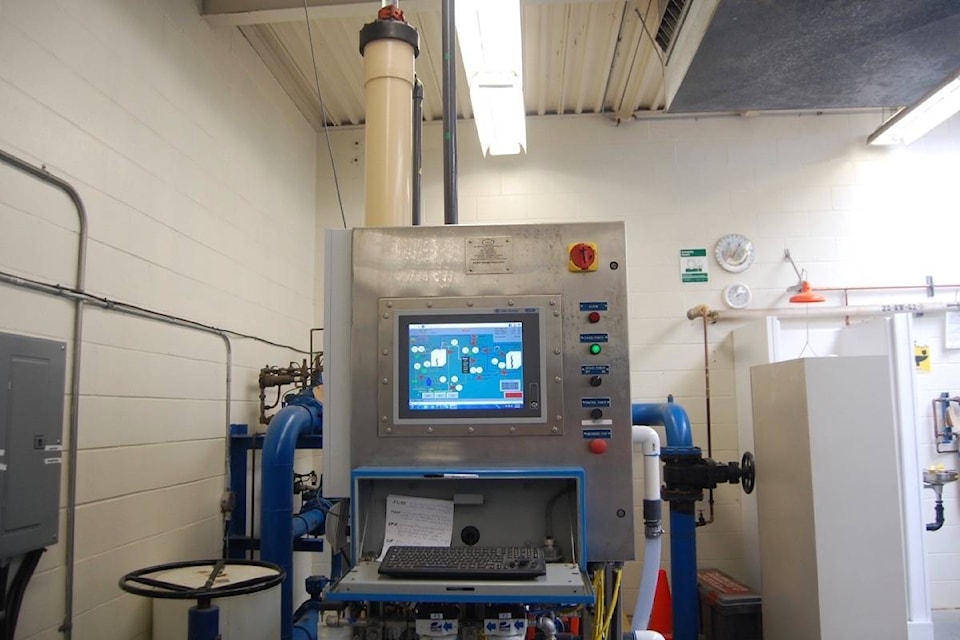A pilot work program to test the membrane filtration system chosen for the new water treatment plant in Ashcroft was carried out for two months ending on June 12, and the results show that the membrane filter coped exceptionally well, even with the extremely high turbidity which has necessitated that a Boil Water Notice be in effect in the village since May 5.
A turbidity level higher than 5 triggers a Boil Water Notice. Ashcroft foreman Brian Bennewith says that even on a weekend in May when the turbidity level of the incoming water was higher than 70, the water that had been treated by the test filter never registered higher than a .014 turbidity level. The treated water did not enter the Ashcroft water system.
The membrane filter was installed by DWG Process Supply/Pall Water, which was awarded the membrane filtration portion of the new plant at the open council meeting of February 27, 2017. The filter contains 6,000 membranes and 640 square feet of surface for the water to be filtered through, after going through coarse and fine screenings to remove larger debris.
The membranes contain tiny holes too small for giardia and cryptosporidium—common causes of water-borne illness—to fit through. When the membrane filters are installed, there will be two banks containing a total of between 90 and 120 filters, each one capable of processing 16.9 gallons of water per minute.
In addition to seeing how well the filter system will cope with turbidity in the Thompson River, the test gave employees an opportunity to see and work with the proposed equipment, as well as establish what the cleaning cycle of the filters will be.
Bennewith says the filter was backwashed with air and water for one minute every half hour. Every 24 hours there was enhanced maintenance, with the membranes flushed with warm, chlorinated water for 30 minutes, to wash any organic or inorganic matter from the membranes.
“The cleaning was very effective,” says Bennewith, adding that it is anticipated that a deep clean will only need to be done once every three months. “We won’t have to do as many deep cleans as we thought, which will keep the chemical costs down.”
In addition to being monitored daily by the village crew, representatives of the company were able to monitor the test results remotely. “I’m very happy with the system,” says Bennewith. “I have no complaints at all.”
